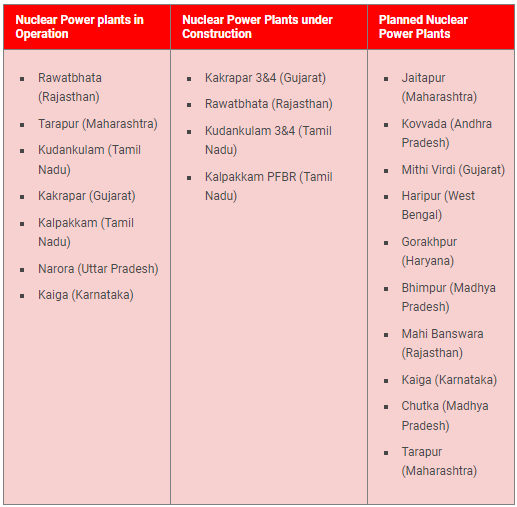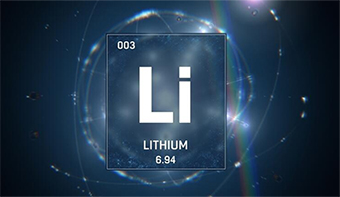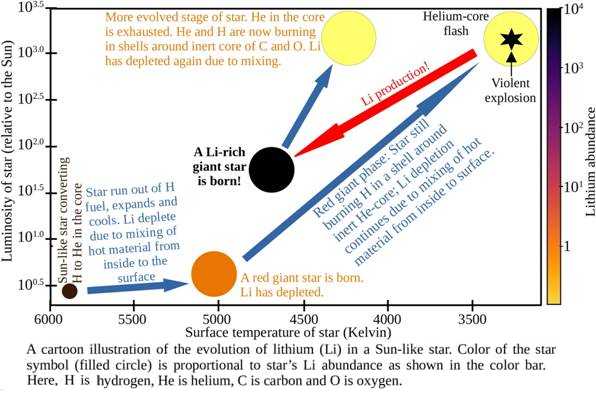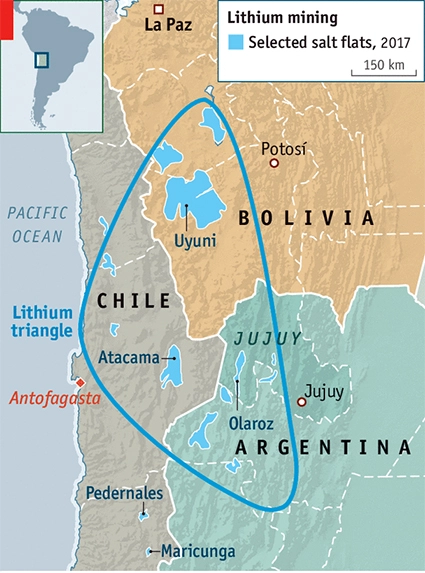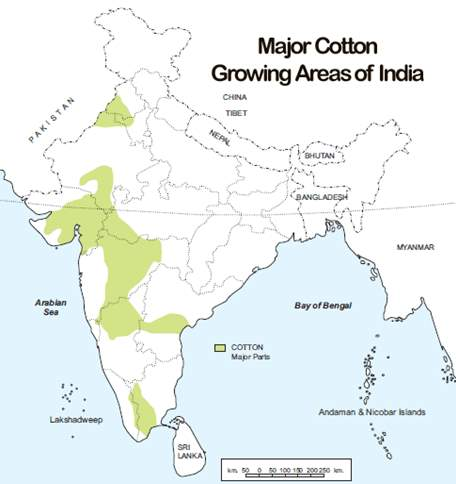Nuclear Energy & Climate
Why in News
According to a recent study published by the Global Carbon Project (GCP), the global carbon dioxide (CO2) emissions are set to soar 4.9% in 2021, compared with the previous year. This calls into question the world’s efforts to tackle the climate crisis.
- The energy sector continues to be the largest emitter of greenhouse gases, with a share of 40% — and rising. In this context, nuclear energy is touted as a non-polluting option.
- However, the scientific community is divided on the opinion of replacing nuclear energy with fossil fuel to tackle climate change.
Key Points
- Pros of Nuclear Energy:
- Non-Intermittent Power Supply: The consistent criticism of renewable energy like wind and solar is that they only produce power when the wind is blowing or the sun is shining.
- Nuclear power, however, is not intermittent, as nuclear power plants can run without any interruptions for a year and more without interruptions or maintenance, making it a more reliable source of energy.
- Cheaper to Run: Nuclear power plants are cheaper to run than their coal or gas rivals.
- It has been estimated that even factoring in costs such as managing radioactive fuel and disposal nuclear plants cost between 33 to 50% of a coal plant and 20 to 25% of a gas combined-cycle plant.
- Achieving Target of Paris Agreement: With the adoption of the Paris Agreement in 2015, it is essential for all countries to control GHG emissions and limit the increase of global mean surface temperature by the end of the century to below 2°C relative to pre-industrial levels.
- Nuclear power can play an important part in meeting climate pledges.
- Non-Intermittent Power Supply: The consistent criticism of renewable energy like wind and solar is that they only produce power when the wind is blowing or the sun is shining.
- Cons of Nuclear Energy:
- Nuclear power is Not Emissions-Free: Depending on the process of electricity generation, or take into account the entire life cycle of a nuclear power plant, the nuclear energy also produces CO2 emissions.
- A report released in 2014 by the UN’s Intergovernmental Panel on Climate Change (IPCC), for example, estimated a range of 3.7 to 110 grams of CO2 equivalent per kilowatt-hour (kWh).
- Further, new nuclear power plants generate more CO2 during construction than those built in previous decades, due to stricter safety regulations.
- Poor Than Other Renewable Alternatives: If the entire life cycle of a nuclear plant is included in the calculation, nuclear energy certainly comes out ahead of fossil fuels like coal or natural gas.
- However, the picture is drastically different when compared with renewable energy.
- According to several data, nuclear power releases many times more CO2 per kilowatt-hour than photovoltaic solar panel systems, wind and hydro power.
- High Initial Cost: Nuclear power plants are about four times as expensive as wind or solar, and take five times as long to build.
- Further, it takes too long for nuclear energy to become available (time taken to reach criticality).
- Thus, nuclear energy requires high inputs to have a noticeable effect on climate change.
- Effect of Climate Change on Nuclear Energy: Nuclear energy itself has been affected by climate change.
- During the world’s increasingly hot summers, several nuclear power plants have already had to be temporarily shut down or taken off the grid.
- Further, nuclear power plants depend on nearby water sources to cool their reactors, and with many rivers drying up, those sources of water are no longer guaranteed.
- Threat of Nuclear Accident: Anti-nuclear campaigners will cite the three major nuclear meltdowns of recent times, Three Mile Island in 1979, Chernobyl in 1986 and most recently Fukushima in 2011.
- Despite all the safety measures in place for these nuclear plants, different factors caused them to go into meltdown, which was devastating for the environment and for local inhabitants who had to flee the affected areas.
- Nuclear Waste: One side effect of nuclear power is the amount of nuclear waste it produces.
- Nuclear waste can have drastically bad effects on life, causing cancerous growths, for instance, or causing genetic problems for many generations of animals and plants.
- Nuclear power is Not Emissions-Free: Depending on the process of electricity generation, or take into account the entire life cycle of a nuclear power plant, the nuclear energy also produces CO2 emissions.
Status of Nuclear Energy in India
- India has consciously proceeded to explore the possibility of tapping nuclear energy for the purpose of power generation.
- In this direction a three-stage nuclear power programme was formulated by Homi Bhabha in the 1950s.
- The Atomic Energy Act, 1962 was framed and implemented with the set objectives of using two naturally occurring elements Uranium and Thorium having good potential to be utilized as nuclear fuel in Indian Nuclear Power Reactors.
Way Forward
- The combination of excessive costs, environmental consequences and lack of public support were all arguments against nuclear power.
- However, nuclear energy has its advantages too.
- Therefore, countries should deliberate to make use of a mix of renewable energy wherever possible.
- Thorium based Nuclear energy should be made viable as soon as possible.
NHA Report on Health Expenditure
Why in News
Recently, National Health Accounts (NHA) reported that the government has increased the expenditure on health, making the decline of Out-Of Pocket Expenditure (OOPE) to 48.8% in 2017-18 from 64.2% in 2013-14.
- This report was produced by the National Health Systems Resource Centre, designated as the National Health Accounts (NHA) Technical Secretariat in 2014 by the Health Ministry.
- The NHA estimates are prepared by using an accounting framework based on the internationally accepted System of Health Accounts 2011, provided by the World Health Organization (WHO).
National Health Systems Resource Centre
- It was established in 2006-07 under the National Rural Health Mission (NRHM) of Government of India to serve as an apex body for technical assistance.
- Its mandate is to assist in policy and strategy development in the provision and mobilization of technical assistance to the states and in capacity building for the Ministry of Health and Family Welfare (MoHFW).
Key Points
- Increased Government Share in the Total GDP:
- For 2017-18, there had been an increase in the share of Government health expenditure in the total GDP (Gross Domestic Product) of the country.
- It has increased from 1.15% in 2013-14 to 1.35% in 2017-18.
- Increased Government Spending on Per-Capita Terms:
- In per capita terms, the Government health expenditure has increased from Rs 1,042 to Rs 1,753 between 2013-14 to 2017-18.
- Share of Primary Health Care:
- The share of primary healthcare in current Government health expenditure has increased from 51.1% in 2013-14 to 54.7% in 2017-18.
- Primary and secondary care accounts for more than 80% of the current Government health expenditure.
- Social Security Expenditure on Health:
- Also the share of social security expenditure on health, which includes the social health insurance programme, Government financed health insurance schemes, and medical reimbursements made to Government employees, has increased.
- Decline in out-of-pocket expenditure:
- The rise in government spending on healthcare led to an increase in the share of government expenditure in the total health expenditure to 40.8% and a decline in out-of-pocket expenditure to 48.8% for 2017-18.
- The fall in OOPE is attributed to the increased utilisation of government health facilities and reduction in the cost of services at these facilities.
- The rise in government spending on healthcare led to an increase in the share of government expenditure in the total health expenditure to 40.8% and a decline in out-of-pocket expenditure to 48.8% for 2017-18.
Issues with Health Sector
- Lack of Primary Healthcare Services: The existing public primary health care model in the country is limited in scope.
- Even where there is a well-functioning public primary health centre, only services related to pregnancy care, limited childcare and certain services related to national health programmes are provided.
- Supply-Side Deficiencies: Poor health management skills and lack of appropriate training and supportive supervision for health workers prevent delivery of the desired quality of health services.
- A report released by the Johns Hopkins Bloomberg School of Public Health in 2019 suggested that nearly one out of every 100 Indian children does not live to celebrate their fifth birthday on account of either diarrhoea or pneumonia.
- Suboptimal access to clean water and sanitation is directly linked to diseases such as diarrhoea, polio and malaria.
- Inadequate Funding: India spent 1.8% of its GDP on health in FY 2020-21 and 1-1.5% in the previous years. India's total out-of-pocket expenditure is around 2.3 % of GDP.
- As compared with the OECD countries’ average of 7.6% and other BRICS countries’ average of 3.6% on their health sector, this is considerably low.
- Overlapping Jurisdiction: There is no single authority responsible for public health that is legally empowered to issue guidelines and enforce compliance of the health standards.
- Sub-optimal Public Health System: Due to this, it is challenging to tackle Non-communicable Diseases, which is all about prevention and early detection.
- It diminishes preparedness and effective management for new and emerging threats such as pandemic like Covid-19.
- Less than Required Doctors:
- India currently has one doctor over the population of 1,445 against the WHO norm of 1:1000.
Related Government Initiatives
- Janani Shishu Suraksha Karyakram (JSSK).
- Rashtriya Bal Swasthya Karyakram (RBSK).
- Implementation of Free Drugs and Free Diagnostics Service Initiatives.
- PM National Dialysis Programme.
- Ayushman Bharat.
- Pradhan Mantri Jan Arogya Yojana (AB-PMJAY).
Way Forward
- To bring down costs beyond a few islands of excellence such as the AIIMS, investments in other medical colleges shall be encouraged to possibly bring down costs and ramp up quality of health services.
- Emphasising on Public Private Partnerships (PPP) in other clinical procedures and hospitals and leveraging private sector expertise in the vaccination drive for a quicker and successful achievement of the target.
- Incentivising R&D (Research and Development) by additional tax deductions to further support greater investments in new drug developments and reducing GST (Goods and Services Tax) on life-saving and essential drugs.
- To prepare the existing healthcare workforce to provide the people the proposed healthcare facilities, it is important to give significant attention to their training, re-skilling, and knowledge upgradation.
Barbados: World’s Newest Republic
Why in News
Recently, Barbados has officially removed Queen Elizabeth II as its head of state and become the world's newest republic nearly 400 years after the country became a British colony.
- The Caribbean island nation, 55 years after its independence, got rid of the remnants of colonial rule by separating from Britain.
- Barbados, however, will continue to be one of the 54 Commonwealth nations.
Key Points
- About:
- Barbados:
- Location: It is a small island country in the south-eastern Caribbean Sea.
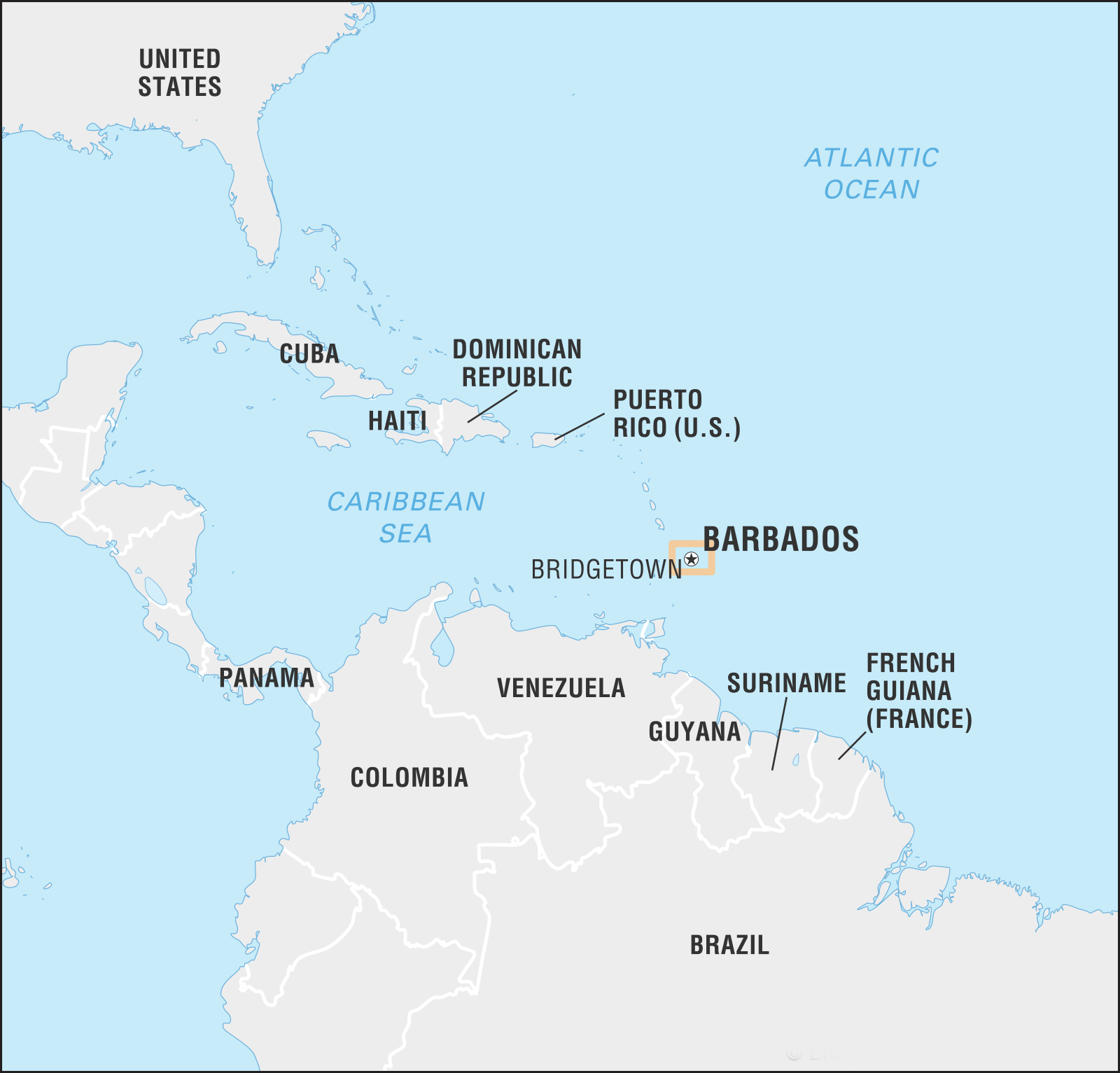
- Neighbours: Its neighbours include Saint Lucia, to the north, Saint Vincent and the Grenadines, to the west, and Trinidad and Tobago to the south.
- Capital: Bridgetown
- Independence: On November 30, 1966, Barbados gained its independence.
- Leadership:
- Dame Sandra Prunella Mason is the current President of Barbados.
- Mia Amor Mottley is the current Prime Minister of Barbados.
- Part of CARICOM: Barbados is part of Caribbean Community (CARICOM) which was formed in 1973.
- Location: It is a small island country in the south-eastern Caribbean Sea.
- History of Barbados:
- Barbados first became an English colony in 1625. It was a part of the British Empire for over 400 years, a link in the lines of trade, commerce and oppression that English mercantilism and colonialism fostered for centuries.
- Slaves, indentured labour, a lack of democracy — the Caribbean was home to some of the most institutionalised and invisibilised horrors in history.
- Barbados:
- India and Barbados Relations:
- Shared Platforms: India and Barbados enjoy close and cordial relations and interact actively in the United Nations (UN), Commonwealth and Non-Aligned Movement (NAM) and other international fora.
- Barbados is also a signatory to International Solar Alliance and has ratified it in January, 2021
- Air Services Agreement: India and Barbados have signed the Air Services Agreement in 2015, for facilitation of travel arrangements for the citizens and the possibility of direct air connectivity and chartered flight operations between the two countries.
- The first ever Foreign Office Consultations (FOC) between India and Barbados was held in Bridgetown, Barbados in 2015.
- UNSC Reform: Barbados supported the G-4 resolution on expanding the UN Security Council in 2007.
- The country also voted for India's candidature for Non-Permanent seat on the UN Security Council in 2011–12, and supports India's candidature for a permanent seat on the Security Council.
- Bilateral Trade:
- Export (USD 12.76 million 2019-20): Indian exports include vehicles, pharmaceuticals, textiles, iron & steel, organic chemicals, etc.
- Import (USD 1.48 million 2019-20): Indian imports include electrical machinery, optical photography, cinematographic equipment.
- Sports and Culture:
- Cricket being a great connection in India, Barbadian cricketers of yore and modern times are household names among Indian sport lovers.
- Many Barbadian cricketers are members of Indian Premier League teams.
- Indian Community:
- Approximately 2500 people of Indian origin have settled in Barbados and most of them have since acquired local nationality.
- Shared Platforms: India and Barbados enjoy close and cordial relations and interact actively in the United Nations (UN), Commonwealth and Non-Aligned Movement (NAM) and other international fora.
Commonwealth of Nations
- It is an international intergovernmental organization of countries that were mostly former territories of the British Empire and dependencies.
- It was established by the London Declaration in 1949.
- Queen Elizabeth II is the head of the Commonwealth.
- The current membership includes 54 Countries. The membership is based on free and equal voluntary co -operation.
- It is home to 2.5 billion people, and includes both advanced economies and developing countries.
- The last country to join the Commonwealth was Rwanda in 2009.
- The Commonwealth Heads of Government Meeting is a biennial summit meeting of the heads of government from all Commonwealth nations.
Abundance of Lithium in Stars
Why in News
Recently, Scientists have found a clue to the mystery behind the high abundance of Lithium in some evolved stars.
- The mystery is the reason behind the high abundance of Lithium in stars, which according to predicted models must get destroyed in the hot plasma of the star.
- Lithium is a trace element on Earth, and a key component of rechargeable batteries.
Key Points
- Sample for Research: The research involved the investigation of lithium among red giants showed that just about 1% of sun-like red giants had a lithium-enriched surface.
- Research Methodology: The research surveyed (called GALAH - named after a common Australian bird) a collection of about 500,000 stars with well-determined physical and chemical properties, including lithium abundances.
- Findings of Research: Regarding the reason for Lithium production, scientists have for the first time confirmed that all the lithium-rich stars are burning helium in their core.
- They speculated that lithium production is linked to the violent helium-core flash.
- It is proposed to be a simple and short sequence of nuclear reactions involving a collision between the two stable helium isotopes which led to a stable lithium isotope.
- The survey revealed the rare presence of lithium-rich giants in all the Sun-like low-mass stars.
About Lithium
- Properties of Lithium:
- It is a chemical element with the symbol Li.
- It is a soft, silvery-white metal.
- Under standard conditions, it is the lightest metal and the lightest solid element.
- It is highly reactive and flammable, and must be stored in mineral oil.
- Lithium has become the new 'white gold' as the demand for high performing rechargeable batteries is rising.
- Rising global lithium demand and surging prices have drawn increased interest in the so-called ‘lithium triangle’ that spans parts of Argentina, Bolivia and Chile.
- Uses:
- Lithium metal is used to make useful alloys.
- For example, with lead to make ‘white metal’ bearings for motor engines, with aluminium to make aircraft parts, and with magnesium to make armour plates.
- In Thermonuclear reactions.
- To make electrochemical cells. Lithium is an important component in Electric Vehicles, Laptops etc.
- Lithium metal is used to make useful alloys.
- Countries with Largest Reserves:
- Chile> Australia> Argentina
- Lithium in India:
- Researchers at the Atomic Minerals Directorate (under India’s Atomic Energy Commission) have estimated lithium reserves of 14,100 tonnes in a small patch of land surveyed in Southern Karnataka’s Mandya district recently.
- Also to be India’s first ever Lithium deposit site found.
- Researchers at the Atomic Minerals Directorate (under India’s Atomic Energy Commission) have estimated lithium reserves of 14,100 tonnes in a small patch of land surveyed in Southern Karnataka’s Mandya district recently.
- Other Potential Sites in India:
- The major mica belts in Rajasthan, Bihar, and Andhra Pradesh.
- Pegmatite (igneous rocks) belts in Odisha and Chhattisgarh.
- Brines of Sambhar and Pachpadra in Rajasthan, and Rann of Kachchh in Gujarat.
- Related Government Initiative:
- India, through a newly state-owned company Khanij Bidesh India Ltd, had signed an agreement with an Argentinian firm to jointly prospect lithium in Argentina.
- Khanij Bidesh India Ltd has a specific mandate to acquire strategic mineral assets such as lithium and cobalt abroad.
- India, through a newly state-owned company Khanij Bidesh India Ltd, had signed an agreement with an Argentinian firm to jointly prospect lithium in Argentina.
Demand for Reduction of Import Duty on Cotton
Why in News
Recently, the Tamil Nadu Chief Minister has requested the Union Textiles Minister to direct the concerned ministries to remove import duty levied on cotton.
- The textile industry is the second largest employment provider in the state and Tamil Nadu accounts for 1/3rd size of the textile business of the country.
Key Points
- Major Demands:
- Removal of the 11% Import duty levied on cotton imports. Also Yarn manufacturers may be given priority over traders in cotton procurement.
- Extension of 5% interest subvention to spinning mills for cotton procurement during the peak season (December-March).
- Reducing the minimum lot size of e-auction of cotton to 500 bales, which is sustainable for the Micro, Small and Medium-sized Enterprises (MSMEs), has also been urged.
- Reasons for the Demand:
- The demand is because of the grave situation of cotton and yarn price volatility and its impact on the prices of fabrics and garments.
- The present crisis has led to mass cancellation of export orders and hardships in fulfilling long term export commitments.
- One of the major reasons for the cotton price volatility is due to the imposition of 5% Basic Customs Duty (BCD), 5% Agriculture Infrastructure Development Cess (AIDC) and 10% Social Welfare Cess in the Budget 2021-22 which amounts to an overall import duty of 11%.
- The demand is because of the grave situation of cotton and yarn price volatility and its impact on the prices of fabrics and garments.
- Concerns related to the Import Duty:
- The import duty on raw cotton would erode the competitiveness of the value-added segments that have a business size of around Rs 50,000 crores in exports and Rs 25,000 crores in the domestic market.
- These segments provide jobs to around 12 lakh people.
- The import duty on raw cotton would erode the competitiveness of the value-added segments that have a business size of around Rs 50,000 crores in exports and Rs 25,000 crores in the domestic market.
Cotton
- About:
- Kharif Crop which requires 6 to 8 months to mature.
- Drought – resistant crop ideal for arid climates.
- Occupies 2.1% of the world’s arable land, meets 27% of the world’s textiles needs.
- Temperature: Between 21-30°C.
- Rainfall: Around 50-100cm.
- Soil Type: Well-drained black cotton soil (Regur Soil) (E.g. Soil of Deccan Plateau)
- Products: fibre, oil and animal feed.
- Top Cotton Producing Countries: India > China > USA
- Top Cotton Producing States in India: Gujarat > Maharashtra > Telangana > Andhra Pradesh > Rajasthan.
- Four cultivated species of cotton: Gossypium arboreum, G.herbaceum, G.hirsutum and G.barbadense.
- Gossypium arboreum and G.herbaceum are known as old-world cotton or Asiatic cotton.
- G.hirsutum is also known as American cotton or upland cotton and G.barbadense as Egyptian cotton. These are both new world cotton species.
- Hybrid Cotton: Cotton made by crossing two parent strains that have different genetic characters. Hybrids are often spontaneously and randomly created in nature when open-pollinated plants naturally cross-pollinate with other related varieties.
- Bt Cotton: It is a genetically modified organism or genetically modified pest-resistant variety of cotton.
- Cotton in India:
- Cotton is an important fibre and cash crop which plays a dominant role in the industrial and agricultural economy of India.
- India is the largest producer of cotton in the world and the third largest exporter. It is also the largest consumer of cotton in the world.
- The pest-resistant Genetically Modified (GM) Bt cotton hybrids have captured the Indian market (covering over 95% of the area under cotton) since their introduction in 2002.
- India produces about 6 million tons of cotton every year which is about 23% of the world's cotton.
- India produces about 51% of the total organic cotton production of the world.
Upskilling of Street Vendors
Why in News
Recently, the Ministry of Skill Development and Entrepreneurship (MSDE) announced a pilot project to train 2,500 street food vendors in Delhi under the Recognition of Prior Learning (RPL) component of Pradhan Mantri Kaushal Vikas Yojana (PMKVY) 3.0.
Key Points
- About:
- The project will be implemented by the Tourism and Hospitality Sector Skill Council (THSSC) and training partners of NSDC.
- The registered street food vendors will go through four-five days of counselling sessions where they will get clarity on their competencies, aptitude, interests, opportunities, and structure of the itinerary.
- The Vendors will be educated on health and safety standards, safety provisions under Covid-19 protocols, effective communication techniques with staff and customers, new-age skills such as digital literacy, financial literacy, digital payments and e-selling.
- The vendors will also be supported with loans under the Mudra Scheme.
- It will make vendors eligible for e-cart licenses, make them learn to improve the hygiene conditions in food preparation and aesthetics of vending. They will be given Rs 500 per day for four days of training.
- Objective:
- The objective is to impart relevant skills to street food vendors, which can lead to better services for consumers, more opportunities for revenue generation and awareness on civic regulations.
- Significance:
- India has around 5.5 million street food vendors who contribute around 14% to the informal economy, making their upskilling vital for the economy.
- It will surely help in lifting the working and living conditions of the workforce.
- It will provide social security and safety to 4,000 vendors in east Delhi and 25 lakh street vendors nationally..
- Other Schemes related to Food vendors:
- PM SVANidhi Scheme
- Main Bhi Digital (me too digital)
- The Street Vendors (Protection of Livelihood and Regulation of Street Vending) Act, 2014.
- Pradhan Mantri Shram Yogi Maandhan Yojana.
- Pradhan Mantri Matru Vandana Yojana.
Pradhan Mantri Kaushal Vikas Yojana
- About:
- PMKVY was launched in 2015 under Skill India Mission.
- It aims to train over 40 crore people in India in different skills by 2022.
- It aims at vocational training and certification of Indian youth for a better livelihood and respect in the society.
- PMKVY-1.0:
- Launched on 15th July, 2015 (World Youth Skills Day) to encourage and promote skill development in the country by providing free short duration skill training, Special Projects, Recognition of Prior Learning, Kaushal & Rozgar Mela, etc.
- PMKVY 2.0 (2016-20):
- Launched by scaling up both in terms of Sector and Geography and by greater alignment with other missions of the Government of India like Make in India, Digital India, Swachh Bharat, etc.
- More than 1.2 Crore youth have been trained/oriented through an improved standardized skilling ecosystem in the country under PMKVY 1.0 and PMKVY 2.0.
- PMKVY 3.0:
- Launched in January 2021, in 717 districts, 28 States/eight UTs, as a step towards ‘Atma Nirbhar Bharat’.
- It envisages training of eight lakh candidates over a scheme period of 2020-2021 with an outlay of Rs. 948.90 crore.
- The focus is on bridging the demand-supply gap by promoting skill development in areas of new-age and Industry 4.0 job roles.
RPL Programme
- It is being implemented by the National Skill Development Corporation (NSDC).
- It aims to promote decentralization and local governance for better planning and implementation of skill development programmes.
- It recognizes the value of learning acquired outside a formal setting and provides a government certificate for an individual’s skills.

